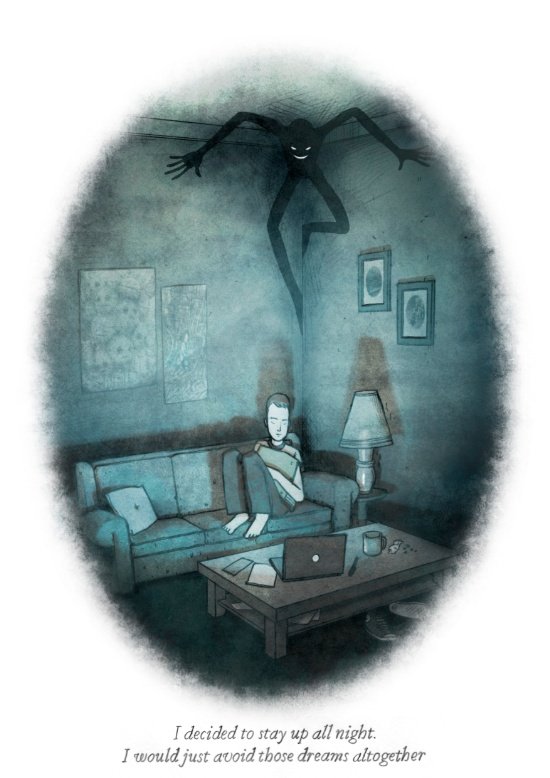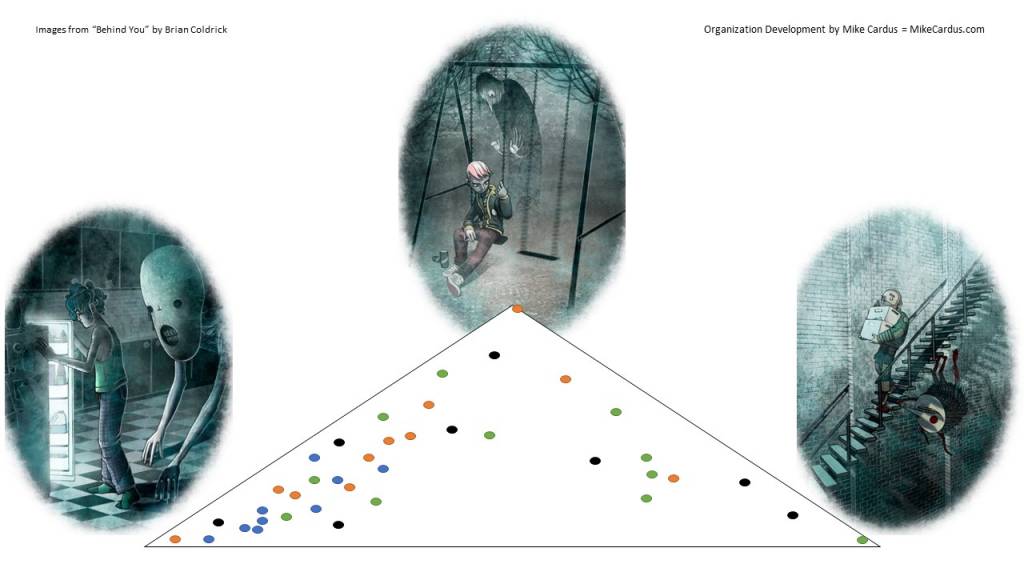
Images from “Behind You” by Brian Coldrick
Bad things happen within your team and company. Plus, the bad stuff hides when culturally and behaviorally, being the bearer of bad news is punished or burdened with management hyperbole, “Don’t bring me problems, bring me solutions.”
Working with management teams the surprise or lack of knowledge about potential challenges and pitfalls leads to bad choices and misinformed actions.
For example, I was consulting a small business that hired Dan as a sales manager. Dan had all the correct answers but lacked the skills and capacity to maintain or grow the company. In the previous years, the company brought in sales of +$4,000,000. At the end of Dan’s second-year sales were -$3,000,000. The CEO knew there was trouble; the sales team knew there was trouble. At our annual strategic planning meeting, the staff knew there was trouble. The company knew that Dan was hurting the sales team, cash flow, and morale, but they never discussed it until they fired Dan.
Bad things happen, often we make the bad things undiscussable, then we make it undiscussable to talk about the undiscussableness. Leading to more secretive discussions and a trust-repelling behavior that amplifies as the bad stuff becomes louder.
How do we make bad things in companies discussable?
One of the many ideas I learned or reinforced from my time at the cynefin retreat on design and emergence was to work hard to remove the “facilitator as the expert” and create an environment where discussion happens with shared boundaries. And this happens best through using experiences and people mapping their experiences to significant shared points, then asking for patterns and connections – working to determine what to amplify and dampen to support change and progress.
Bad things triad
With this in mind, and I just finished reading “Behind You” by Brian Coldrick (plus my team-building work using images and metaphors), I met with a leadership team to discuss bad things that are currently happening and how to talk about them.
Gathering bad things examples
Before our meeting, I emailed about 100 people in the company and asked them to complete the following task:
- We are discussing bad things that are happening within the organization. Can you type a response to the following? Please, share a current bad thing or something that is a known challenge to you and others BUT you feel is not being spoken about. Share the response as if you were talking to a close friend at a bar or over a casual dinner.
I gathered and printed each response on separate slips of paper. I laid all the examples just as written on the conference table in the meeting room.
When the team arrived, I asked them to walk about and read the stories. We then took about 45 minutes and placed the stories into similar challenges and bad things examples.
Using images for the context
- I printed three images from “Behind You” and taped them in a triangle to a large whiteboard in the meeting room.
- Then asked the team to create a title connected to the organization for each image.
- The leadership team then placed a color dot within the triangle to represent where the bad thing stories most closely reflected their experiences.
Finding patterns. What to amplify and dampen
Now the leadership team had:
- Examples of bad things happening in their staff’s voice and reflections of themselves.
- Made sense of the stories by attaching them to images they titled within a triad.
- As a team noticed patterns and significance in the bad things within the company, they knew about and did not know about.
As the team worked through this, the increase in trust, open discussions, and how they got here were visible. The managers often kept smiling at one another, shaking their heads, apologizing, and asking why we never spoke about that.
The team starred at the piles of examples, the Bad Things Triad – and identified patterns. The patterns were areas that they knew about and others knew about, that they knew about and others did not know, areas others knew and did not know …. and they also discussed other threats and bad things that they and others had not thought about or listed!
The final piece was to identify areas that the leadership team has control over. The areas of focus and change can amplify or make louder to ensure that these bad things are spoken about and the company can address them. Plus, areas they can dampen or do less to ensure that bad things or threats are not hidden and may create severe damage to the company. We took these areas to amplify and dampen, then placed them into a cynefin framework, and the team got to work.

Talking about bad things in a company sounds like an easy idea. Making the space for people to speak and openly share threats and obvious plus not-so-obvious bad things takes a team that is big enough and wants to make change happen. The format above works well and creates a space where people can talk and ideas are heard through the organization’s voice. Often, teamwork training, radical candor, crucial conversations, etc…. sound like a great fix. But, training makes one person an expert -the trainer – and the examples are contrived or not applicable to the people in the room. Moving the frame from the trainer to the people that work within your organization will create resilient change that improves the company – you have to be willing to listen and respect your team.

